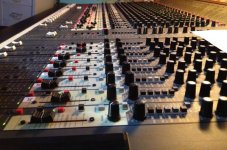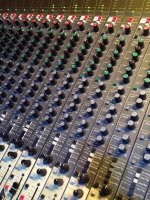Hi Robert,
The PPM meters should indeed read -6dB when 1,23V/+4dBu is measured at the mains with a SINUS, so they're calibrated correctly.
When normal music/sound material is played, the meters will then show 6dB higer levels.
Succes.
Ik hoop dat het o.k. was om in het Engels te beantwoorden.
Thanks for the replay in English!

What I don't understand why D&R applies this kind of concept to their consoles, where you seem to have two different operating levels:
1) +4dBu (1,23V) input gain operating level.
2) +10dBu (2,45V) master output and channel output operating level.
Usually you have the same operating level throughout the whole console. I'm sure there must be a technical reason for it. I'm wondering if someone knows it? Could it be that the operating level in Dutch TV and Radio is +10dBu?
In my case the +10dBu was to hot for my AD-Converter. Luckily enough I could modify it by changing few resistors.
Of course you can always lower the master faders, but this - let's say - is suboptimal.
I hope you guys will tolerate a few posts in English. I'd really like to figure out what's with this two different operating levels.
Laatst gewijzigd:
 Lets figure it out what it is. As I said above I'm new to this stuff.
Lets figure it out what it is. As I said above I'm new to this stuff.

